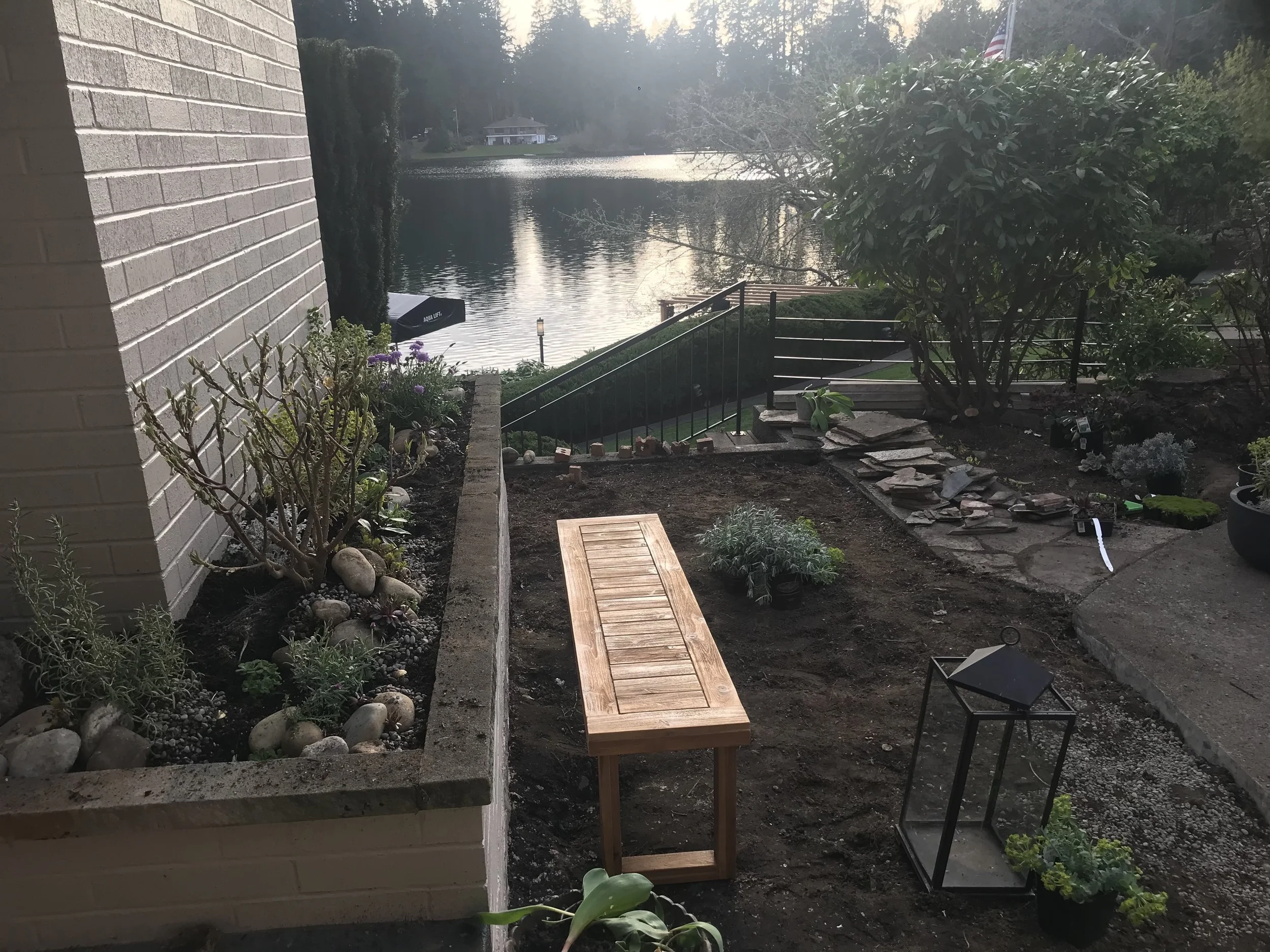Exterior: Agaves in the PNW?
This house has a great layout, you walk in to a stunning view floating over the water, take your groceries right into the kitchen, and an entire extra house unfolds below with a walkout basement. But what to do with this 1950’s exterior that you first walk into? We painted the exterior of the house pretty early on, but then I was stuck. I ripped out some of the vines and bushes and thought I could fix the problems with plants. I went to a nursery with a great return policy, and picked out a palette I liked that would thrive in shade.
Plants
These plants still looked like a mess, and did nothing to distract from the cracking concrete. I had the concrete cut to create a clean straight line. Because I had not realized how much the concrete sloped up, it left me with a problem I had not really considered - a giant drop after the step. I needed something to fill it and decided to have a nice step poured, but still there was no vision for this exterior.
What I really wanted was from my Southern California roots of succulents and agaves and plants that could never survive a snowy winter here. And then, while searching, I found some high quality outdoor faux plants- and a lightbulb went off. After that, the direction was clear. The smaller agaves frankly only lasted a couple of years in the elements, but my large agave lives on six years later looking just as good as new.
Once the vision was there, I could fill in the space with some flagstone left behind from the previous backyard, some plantings, and bench, then covered the rest with groundcloth and decomposed granite.
Lighting
When pouring the step, I made sure to have conduit run underneath, because every space needs good lighting.
Since my low voltage lighting worked out so great in the back yard, I decided to run some in the front yard also. Like the back yard, I took apart some battery operated candles and placed them on top of the low voltage lighting I dug into the ground, adding a target lantern on top.
The exterior felt like it need an architectural element on either side of the fireplace, and outdoor lighting was a great solution to add interest. To add proper exterior lights would require drilling into both the exterior brick and the interior fireplace stone on the wall behind, which was simply not an option. Instead I came up with an idea to run low voltage wires along the soffit line and down to each light. If you look very closely you can see the wires, however, the overall look is worth it and wouldn’t have been possible any other way. I purchased regular outdoor lighting from home depot, removed the wiring and put back in low voltage lights. They turn on automatically at night with all of our other lighting and I couldn’t be happier with the final product.
Rain chains replaced several gutters and pots from At Home serve to collect water.



























